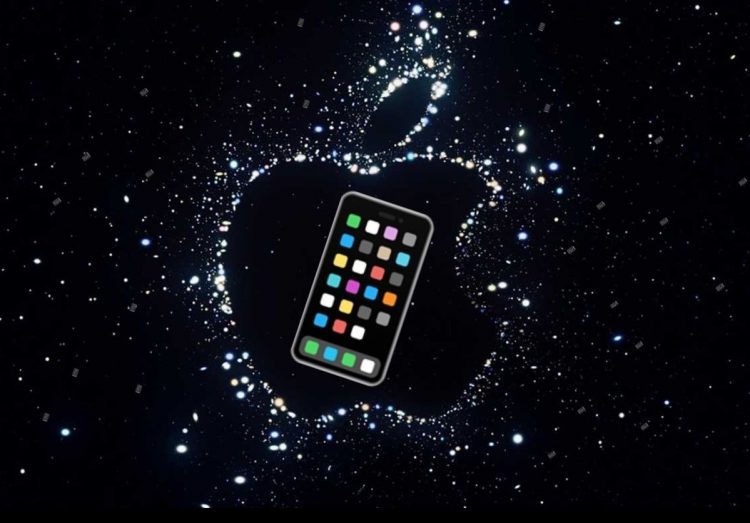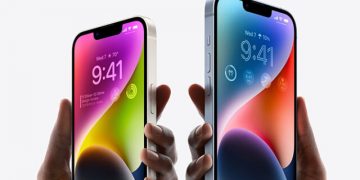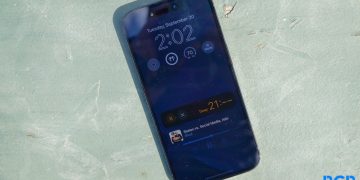Apple today confirmed most of the pre-event speculation when it introduced its iPhone 14 range (with only the Pro models equipped with a new A16 chip), a three-model Apple Watch range and new AirPods Pro. No surprise: this was primarily a consumer-focused event with enterprise considerations few and far between.
But here are a few insights I picked up.
Satellite connectivity for the iPhone
Is there an enterprise consequence to Apple’s decision to enable satellite connectivity for iPhone? There might be.
One part of the equation here is that Apple is essentially saying it doesn’t think connectivity will ever truly be universal, and it means the company (or its partners) can consider offering connectivity to users in remote areas with opportunities in maritime and connectivitypossible even in hostile environments. For business users in maritime, emergency recovery, or exploration, it means iPhones may be considered essential emergency equipment.
Reading between the lines, in two years’ time there may be more significance to the deal. That’s because Apple says it will offer Emergency SOS via satellite as a free feature for the next two years. What happens after that? And to what extent might the feature be extended? It seems this feature is indeed powered by GlobalStar. (Call me old-fashioned, but the revelation that Apple will pay 95% of approved capital expenditures GlobalStar makes in relation to the service also piqued my interest.)
Aim high by aiming low
A Business-101 lesson from the event might be what Apple has done with Apple Watch, where it has simultaneously reduced the cost of entry with a new — and lower-cost — Apple Watch SE, while raising the point of aspiration with the Apple Watch Ultra. The new SE absolutely meets the needs answered by most previous Apple wearables. And while improving the standard model with features (such as new temperature sensors) that inherently appeal to 50% of humanity, the company also introduced an aspirational new device; in a classic twist of marketing savvy, the $799 Apple Watch Ultra gives users a glimpse at something they didn’t know they wanted in the first place.
The Apple Watch Ultra.
Apple said it worked for years to create it, a lesson that should be in every product or service-oriented business management manual. Not only should you make the best better, but you should consider where something even better makes a difference. Because if you get that right, all your existing customers are going to want one anyway. I expect that to happen with Apple Watch Ultra. I already know of at least one person who slapped down their credit card to get one of these things, even though they don’t climb mountains terribly often. (Editor’s note: I feel seen.)
Dynamic Island
Apple has replaced the notch on the Pro model phones with something it calls Dynamic Island. This is a smart use of space that arguably was simply wasted before, and the company also told us that third-party developers can build apps to exploit the new space. (It briefly showed a third-party delivery app making use of this.)
I do wonder if some business app developers might find some way to exploit Dynamic Island in their apps to build connection with end users. I can easily imagine delivery services using the space to flag delivery times, retailers to post offers, or hotels and visitor attractions using it to flag proximity and local information. I can certainly imagine – or at least hope – that public transportation providers exploit the feature to show when the next bus or train is due at a location.
The Dynamic Island will use the area around the newly reshaped notch in the iPhone Pro.
The reason I think this may be worth exploring is that these kinds of fundamental micro-experiences may well be the kind of information nuggets users will in the future enjoy when using mixed-reality devices. They’re low impact, information rich, while also being relevant and ephemeral. It’s certainly worth exploring the API.
AR was everywhere
That thing about putting things in plain sight? Each time an Apple exec stood in front of a virtual slide, they showed how AR and VR can augment existing conversation. All this exposure means that by the time they deliver the device everyone expects them to introduce, what it does will to feel inevitable. And those tiny trackpads on the AirPods Pro will almost certainly have significance as Apple continues to develop a more wearable UI.
Combine this with Apple’s continued advances in terms of AI, CMOS, imaging, and machine learning in imaging and you can perhaps discern the continuing evolution of the kind of intelligence you’ll need to make intelligent machines. Such as cars.
Love and fitness across the walls
Apple will make its Fitness+ service available to all iPhone users across 21 countries, even if they don’t have an Apple Watch. That’s nice, but the company’s move to extend the reach of its services doesn’t end there. One of the benefits of Fitness+ is that you can watch the workout video on your Apple TV while using data picked up by Apple Watch.
In the future, if you don’t have Apple TV, you’ll be able to stream workouts to third-party devices and if you also have an Apple Watch you’ll get the on-screen metrics it provides. This small improvement is meaningful, as it implies the extent to which Apple intends its services to become platform agnostic, albeit with a little Apple at their core.
Apple is reaching out beyond its so-called walled garden.
The green slide
I’ll make this simple. Across California there is an excessive heat warning. In Pakistan, vast tracts of the nation are drowning. It’s raining in the UK and there are hose pipe bans, following months in which rain did not fall. Across Europe, the fields and forests are burning. It may be too late to act, but any rational person should demand more of the kind of corporate honesty Apple promises each time it flashes up a slide detailing the environmental consequences of each product it makes. Even so, it still seems to have some way to go.
The direction of travel
Another tiny feature that may speak volumes is Apple’s extension of UWB into the AirPods realm. With Precision Finding, users with a U1-enabled iPhone can locate their charging case with guided directions. That’s not new in terms of what Apple’s Find My system (which drives this feature) promises to do, but it does suggest the extent to which the company navigates its way around all the scary stalker and surveillance abuses of such tech.
eSIMs for the US (for now)
The move to eSIM, which is US-only for the time being, will make it much easier for business users to deploy company lines across employees. And as eSIM becomes more widely adopted, as usually happens once Apple makes a move of this kind, it will become a little more challenging to create and exploit fake IDs for nefarious purposes.
The one more thing to remember: if you do choose to provision eSIM lines across your staff you may need to double-check the process needed to move that number from an iPhone to another device, particularly on another platform. Given the importance of consistent number provision to business users, this move is one enterprise purchasers need to think about. For casual travelers, it may well make it hard to skip inflated carrier prices by simply slotting in a burner SIM.
Personalize where you can
I know I’m stretching it, but I was impressed that Apple managed to introduce one small new tweak in AirPods Pro that could be used as an insight to consume-focused enterprises. If you’ve used an Apple product, you’ve probably come across Memoji, which lets you create a little avatar of yourself. This has always been nice when using FaceTime, but Apple now seems to be bringing that little digital delight into the real world, as you can now have that personalized icon of yourself engraved onto the case of a new set of AirPods Pro.
This may seem relatively minor to a lot of people, but to me it’s a good articulation of the power of building personalized relationships with customers. It’s a tiny touch, but a good one.
Please follow me on Twitter, or join me in the AppleHolic’s bar & grill and Apple Discussions groups on MeWe.
Copyright © 2022 IDG Communications, Inc.
Source by www.computerworld.com






























